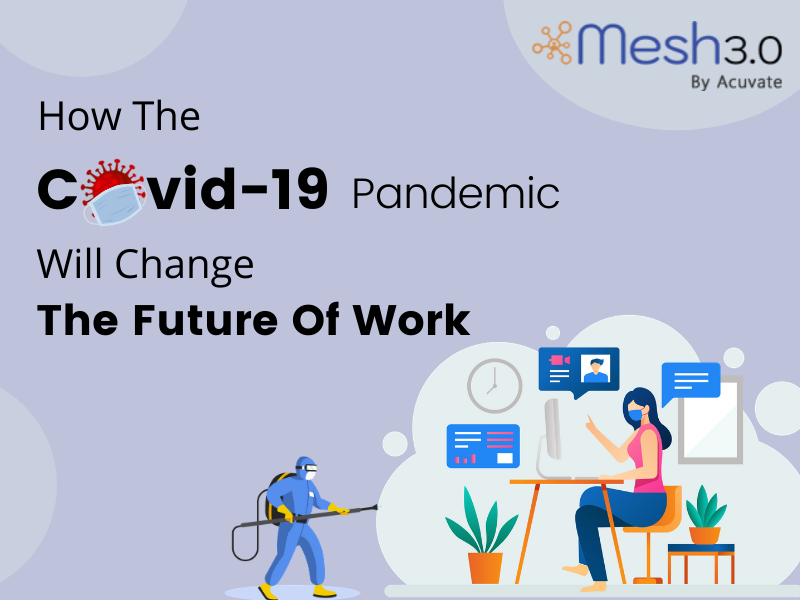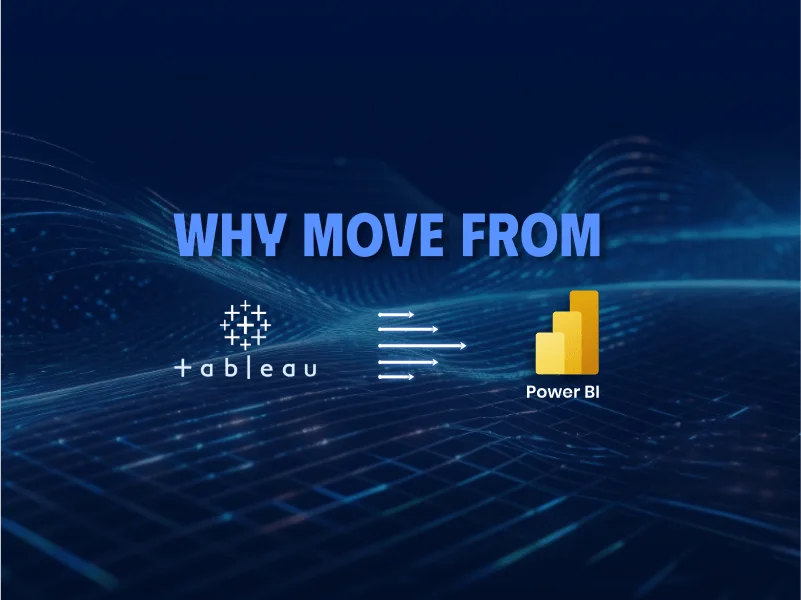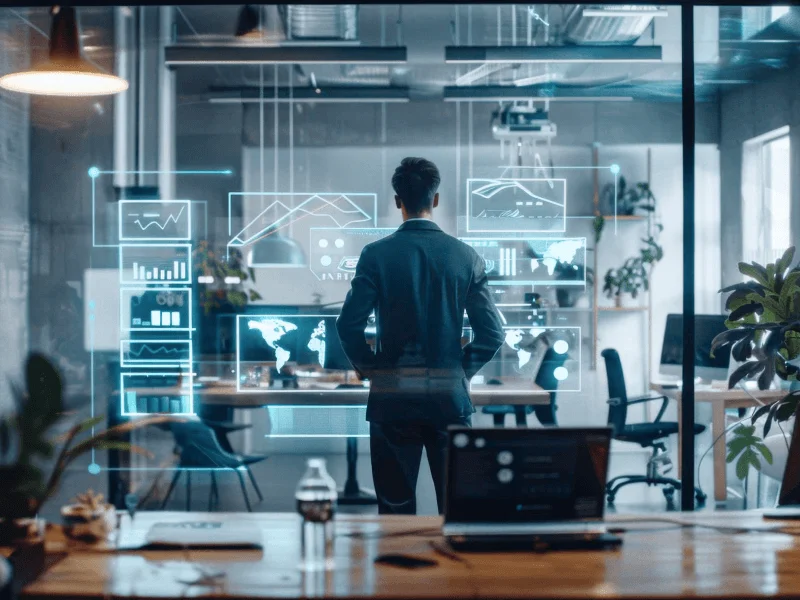In the last few months, the COVID-19 crisis has turned both our personal and professional lives upside down. The relationships among individuals, businesses, employees, customers and societies in general have been rewired and are paving the way for what Deloittes calls as “the new social contract”.
The pandemic has forced businesses around the world to transform how they operate and changed all the previous predictions about the “future of work”.
Business leaders are now trying to determine how work gets done in the new normal. Most of them are still testing waters, monitoring the situation, collecting employee and customer feedback, and assessing their capabilities, values, industries, situation in their operating geographies, etc.
It’s imperative that they comprehend the large-scale changes that are shaping how employees work and apply that knowledge to their respective organizations so they can modify their strategies accordingly.
We’ve recently asked 36 industry leaders to share critical Digital Workplace Best Practices To Fight COVID-19. Their super-interesting insights led us to predict how the future of work looks like during and post COVID-19 era.
In this article, based on our recent experiences with Fortune 500 enterprises and interactions with industry analysts, we share some key predictions on how the COVID-19 pandemic will change the future of work.
1. Increased Adoption Of AI And Automation
As a result of the pandemic, businesses have become more open to adopt new AI and automation systems that can enable them to not only survive in the short-term but also thrive in the post-pandemic environment. They are increasingly looking for ways to cut costs whilst maximizing efficiency and the utilization of their resources.
They are trying to find ways which enable them to delegate most of the work to robots and algorithms and have the minimum staff available physically at the office. Algorithms and bots don’t need social distancing and can’t get sick!
This crisis also presents a unique opportunity for businesses to build long-term connections between their human and AI workforces. For instance, AI can be deployed to assist the workforce effectively by automating repetitive, time-consuming, and mundane tasks. This way businesses can leverage both human creativity for decision making and AI intelligence to eliminate errors, and drive scalability and innovation for years to come.
Learn More: Enterprise AI: The Adoption Strategy & Practical Solutions
2. Increased Focus On Employee Safety And Well Being
Ensuring workplace safety will be critical. Businesses will have to maintain important items such as hand sanitizers, masks, virus-testing kits, and social distancing throughout the workspace.
Moreover due to social distancing restrictions, people are becoming anxious and depressed, which has been the hallmark of this lockdown. Due to the massive job losses and limited social life, they are uncertain about their futures. Businesses will have to invest in employee assistance programs such as free access to therapists and taking wellness measures to help employees overcome the increasing work stress-induced mental health issues.
To this end, businesses will also be implementing Safety, Health and Environment (S.H.E) apps and chatbots.
Join our webinar: S.H.E. Apps Using Low Code, Faster Deployment – Track Employee Well Being During & Post COVID19
Learn More: How Chatbots Are Helping The Fight Against The COVID-19 Crisis | Blog
3. Remote Work And Virtual Collaboration
Until now, the majority of businesses and employees, all over the world, believed that in order to generate results, working in an office, with the entire team and managers, is essential. This entrenched norm required businesses to bear additional expenses in the form of rents, seating, electricity, and associated facilities. However, the pandemic has shattered this belief.
It proved that employees can work effectively from home, giving businesses an option to reduce costs by implementing remote work.
However in order for remote workers to function effectively, they need access to modern remote working and collaboration technologies. To this end, businesses have to rethink their digital workplace technologies and modernize their intranets, productivity and knowledge management suites, and implement secure collaboration and communication solutions.
At Acuvate, we’re helping our customers achieve all this through our Mesh 3.0 – World’s First Autonomous Intranet built on Office 365. Powered with AI, it provides a single point of access for employees to communicate, collaborate, search and share knowledge.
Beyond technology, remote working will have a huge ripple effect on the working society in general. For instance, remote work will decrease the movement of workers to big cities where the cost of living is higher. As a result, salaries will be pegged to the cost of living of the location, enabling businesses to minimize staffing costs.
4. Improved Flexibility
As work life and personal life move forward in the same place, businesses will have to be flexible with work timings and have to relax rules about employees starting and ending their days at a fixed time. The work can be built around the employee’s schedule rather than having the employee’s activity be built around work timings. To do this effectively, businesses and employees must relay expectations and deadlines with each other clearly and in advance, and ensure that communication lines remain open for on-demand discussions and clarifications.
5. Huge Employee Data Collection
Remote work will expedite data collection as businesses will want to keep track of their workforce to better manage employee productivity and engagement. Gartner reports that 16% of the companies are keeping a passive track of their employees via virtual clocking in and out, computer use tracking, and monitoring of emails and internal chats. In addition, businesses are likely to have more access to their employees’ health information. However, it is also critical for businesses to weigh-in on the ethics of capturing, using, or sharing such amounts of sensitive data.
Businesses can also use employee productivity analytics tools like Microsoft Workplace Analytics and My Analytics to measure productivity and engagement and get actionable insights into areas of improvement.
The data is not limited to just tracking employee activity but also evaluating employee performance. Businesses will need to work with their workforce to create new result-oriented metrics to measure success rather than the activity-oriented ones. Businesses will be more concerned about what the employees produce rather than how much time they spend working. For instance, an HR representative may be judged on the employee turnover rate.
Managers will have to be able to relay information and expectations clearly and effectively, and must provide regular feedback to eliminate any roadblocks. They must be more trustful of their staff to not just maintain effective communication and collaboration but also foster a successful remote working culture.
6. More Contingent Workforce
Businesses will increasingly look to enhance their workforce flexibility by relying on contingent workers. The contingent workforce can be a huge cost-saving measure, with Garnter reporting that 32% of the surveyed companies have already started to hire them in place of full-time employees.
Get Started
The COVID-19 pandemic has disrupted businesses like never before. They are forced to adopt digital transformation in one of the most volatile economic scenarios in history. They have to test their ability to blend people and technology. They have to devise new ways to bring the workforce together. They have to find new ways to drive employee productivity and collaboration.
While there is no solid answer on how the pandemic will unfold and how it’ll impact how we work in the long-term, businesses which are technology, data, strategy and people driven will be in a much better position to meet the changing needs of the future of work.
If you’d like to learn more about this topic, please feel free to get in touch with one of our AI and digital workplace consultants for a personalized consultation.




